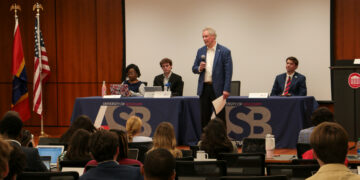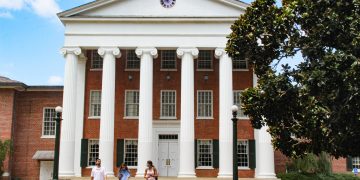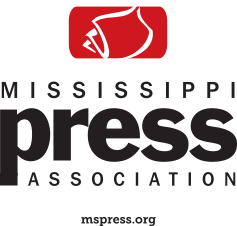When one thinks about who has the most influence, we often think of the economic top. The wealthy alumni are able to shape the conversation and influence how the administration responds to many controversial topics on college campuses. Despite that power, they are only the second most powerful influencer. There’s another group with more power and influence than them.
The labor of student athletes is the lifeblood of our community.
In the Southeastern Conference, 58 percent of football players and 65 percent of basketball players are black, while only 18 percent of the population of the 11 “SEC” states are black. Indeterminately, a majority of wealth is largely produced by the talent and labor of these 18-22 year-old black men.
In 2017, the Ole Miss athletic department generated $117 million, and the football program alone generated $80 million.
Student athletes generate money for more than just our university. Lafayette County made nearly $154 million in tourism in 2016, and enough fans come to these games that local bars can charge high covers and still have lines to get in. Advertisers, on the other hand, spend millions of dollars on commercials during games. Nationwide college athletics generate around $4 billion each year.
In terms of collegiate sports, football and basketball teams hatch huge amounts of wealth for the NCAA, SEC, ESPN, as well as big corporations who advertise, such as Dr. Pepper and Allstate, and more local ones like Oxford business owners. While unfortunately they receive an immorally small fraction of the wealth they create as it trickles down in the form of scholarships and stipends, they still control the “means of production.”
Since the athletes control the production of this wealth, they have a lot of relative power in Oxford. So when controversial issues like the state flag, the confederate monument or dubious names of buildings become part of the discourse on campus, the administration shouldn’t listen first to their white wealthy donors, but the athletes.
However, if the administration does not listen to them, the student athletes could take matters into their own hands. If athletes wanted to create a more welcoming and inclusive university community for black and brown students, all it would take is a little organization and solidarity. If black and brown players, along with hopefully some white and Hawaiian allies, went on strike, then perhaps there would be plans to meet their demands by the next kickoff. They control the generation of so much wealth, and those who make the important decisions on campus care more about funding the university than any ideological support or opposition to racial issues on campus. In 2015, when University of Missouri football players went on strike, their demands for the resignation of President Timothy Wolfe were met the next day.
At Ole Miss, athletes could demand the Confederate monument be removed or that we remove Paul B. Johnson and L.Q.C. Lamar’s names from buildings so that black and brown students can attend a university that doesn’t glorify those who fought to keep African-Americans in chains and segregated from their classmates. With a more nationwide organization, they could even demand that they receive a much larger and fairer share of the wealth they generate.
You have to hit them where it hurts, and athletics’ money is what fuels this city and university. Those with power have a duty to help those without power. As students continue to organize and protest to create a more racially inclusive university community, it’s important to remember that the most powerful people in our community are the student athletes who work every day to generate millions of dollars for the university.
Jacob Gambrell is a senior international studies major from Chattanooga, Tennessee.


























